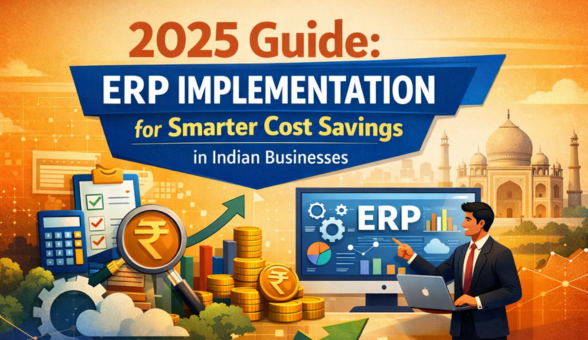How to Build an E-commerce Platform for Arts and Crafts
The digital age has transformed the way we buy and sell goods, with arts and crafts seeing a significant shift towards online sales. An e-commerce platform dedicated to arts and crafts not only provides a marketplace for these unique items but also creates a community of artists, crafters, and enthusiasts.
The key to success lies in understanding the unique aspects of the arts and crafts market and leveraging technology to meet the needs of both creators and consumers.
But what does this mean for traditional craft fairs and local art shows in an increasingly digital world? Recent statistics highlight a growing trend: over 35% of consumers now prefer to purchase artisan products online, a figure that has more than doubled in the last five years.
This shift underscores the importance of a digital presence for artists and crafters, not just to sell their creations but to connect with a wider audience and build a sustainable business in the modern marketplace.
1. Understanding the Arts and Crafts E-commerce Landscape
2. Planning Your E-commerce Strategy
3. Choosing the Right Platform
4. Designing Your Arts and Crafts Website
5. Setting Up Your Online Store
6. Integrating Essential E-commerce Features
7. Marketing Your Arts and Crafts E-commerce Site
8. Engaging with Your Creative Community
9. Analyzing and Optimizing Your Website
1. Understanding the Arts and Crafts E-commerce Landscape

The global interest in handmade and artisanal products is on the rise. Platforms like Etsy have underscored the potential for arts and crafts e-commerce, with Etsy reporting gross merchandise sales of $13.16 billion in 2023.
In India, platforms such as Craftsvilla and Artzolo have tapped into the rich heritage of Indian crafts, offering a space for local artisans to sell their work to a wider audience. Identifying your target audience is crucial, whether they are art collectors, DIY enthusiasts, or those seeking unique home decor items.
As the market for online arts and crafts continues to grow, understanding these shifts and the broader e-commerce landscape becomes ever more important for sellers looking to capitalize on this trend.
2. Planning Your E-commerce Strategy
Defining your niche is the first step in setting up your e-commerce platform. The arts and crafts market is diverse, ranging from traditional handicrafts to modern art supplies.
Deciding whether to focus on a specific type of craft, such as pottery or textile art or to cater to a broader range of creative interests can help in tailoring your marketing strategy and product selection.
Understanding what makes arts and crafts e-commerce unique—such as the story behind each item and the community aspect—can guide your platform’s development.
Moreover, integrating features that allow artists to share their process and the inspiration behind their creations can enrich the customer experience, fostering a deeper connection between creators and consumers.
Additionally, offering tailored recommendations and curated collections can enhance discoverability, making it easier for customers to find products that resonate with their personal tastes and interests, ultimately driving engagement and sales.
3. Choosing the Right Platform
Selecting the right e-commerce platform is critical for the success of your online business. Shopify, WooCommerce, Etsy, and Boomimart offer distinct benefits tailored to different needs. Shopify stands out for its comprehensive solution with extensive customization options, ideal for those looking to establish a brand beyond a mere marketplace presence.
WooCommerce, integrating seamlessly with WordPress, provides flexibility and extensive control over your website’s design and functionality, catering to those who prioritize website customization.
Etsy offers immediate access to a vast audience of arts and crafts enthusiasts, although it limits your ability to brand and customize your store.
Adding to these options, Boomimart emerges as a powerful choice for businesses looking to leverage an integrated e-commerce platform with robust features like inventory management, order processing, and CRM capabilities.
It’s particularly suited for businesses that desire a comprehensive suite of tools to streamline their operations and enhance their online presence. Each platform has its unique advantages, and your choice should align with your business model, target audience, and growth ambitions.
Plan Your Online Store
4. Designing Your Arts and Crafts Website

Your website should be a reflection of the creativity and diversity of the arts and crafts community. A visually appealing, easy-to-navigate site encourages exploration and purchase.
Incorporating art website design ideas and templates that inspire creativity can make your platform stand out. Essential features include high-quality images, artist bios, and the stories behind the products, which add depth and connection to the shopping experience.
For instance, consider the success of Art websites like SAATCHI ART, which has effectively harnessed the rich tapestry of Indian arts and crafts to offer a unique shopping experience by showcasing the cultural heritage and personal stories of its artisans.
Adding interactive elements such as video tutorials or live workshops can further deepen customer engagement, making your site not just a marketplace but a hub for art enthusiasts to learn, appreciate, and connect with the craft on a more intimate level.
5. Setting Up Your Online Store
Creating a welcoming and efficient online store is pivotal. Begin by organizing your product listings into intuitive categories such as art supplies, handmade crafts, or custom products.
Each listing should include high-quality images and detailed descriptions that highlight the uniqueness and craftsmanship of the item. Tools like Boomimart can simplify inventory management, allowing you to track stock levels and update product listings easily.
This ensures your store always reflects current offerings and avoids customer disappointment over out-of-stock items. To further enhance the user experience, incorporating customer reviews and ratings provides valuable feedback and builds trust with potential buyers.
Additionally, integrating secure payment options and transparent shipping policies not only streamlines the purchase process but also assures customers of their safety and the reliability of your platform.
6. Integrating Essential E-commerce Features
a) Reliable Payment Gateways
A seamless shopping experience is key to customer satisfaction. Integrating reliable payment gateways like PayU, CC Avenue, and Razorpay ensures secure transactions, offering a variety of payment options that cater to different customer preferences across the globe.
These platforms are renowned for their robust security measures, including encryption and compliance with international standards such as PCI DSS, which further enhances trust in your platform.
Regular updates and maintenance of payment systems by these providers prevent glitches and downtime, ensuring a smooth transaction process for customers at all times, thereby supporting a wide range of payment methods from credit cards to digital wallets, making it easy for customers to choose their preferred method.
b) Varied Shipping Options
Shipping options should be clear and varied, providing everything from standard to expedited shipping to meet different needs.
Transparency in shipping costs and delivery times helps set realistic expectations and improves customer satisfaction.
Offering tracking options for shipments adds a layer of comfort for customers, keeping them informed about the status of their orders.
Implementing eco-friendly shipping options can appeal to environmentally conscious consumers, aligning with the values of your brand and its customers.
c) Customer Reviews and Ratings

Customer reviews and ratings can significantly enhance credibility, offering prospective buyers insight into the quality and satisfaction of your products. Featuring a system that allows for easy submission and moderation of reviews encourages more customers to share their experiences.
Responding to reviews, whether positive or negative, demonstrates your commitment to customer feedback and service. Leveraging positive reviews in marketing materials and on social media can boost your store’s reputation and attract new customers.
Indian arts and crafts platforms like iTokri and Craft Maestros exemplify the power of customer feedback, showcasing authentic artisanal work and gathering extensive customer praise for their quality and service.
These platforms not only provide a space for artisans to sell their crafts but also build a trusted community through transparent customer reviews, further bridging the gap between traditional craftsmanship and modern e-commerce convenience.
7. Marketing Your Arts and Crafts E-commerce Site
Digital marketing is your most powerful tool in attracting visitors to your site. Implement SEO strategies to improve your visibility in search engine results for arts and crafts-related queries.
Utilize social media platforms to showcase your products, share behind-the-scenes glimpses of the creative process, and engage with your community. Email marketing campaigns can keep your audience informed about new arrivals, special promotions, and exclusive events.
Additionally, leveraging influencers and bloggers within the arts and crafts community can amplify your reach and credibility, introducing your offerings to a broader, yet targeted, audience.
Incorporating analytics tools to track the performance of your digital marketing efforts allows for data-driven decisions, ensuring you invest in strategies that yield the best ROI and continuously improve the online experience for your customers.
8. Engaging with Your Creative Community

Your platform should be more than just a place to buy and sell; it should be a community hub for artists, crafters, and enthusiasts. Features like artist profiles, community forums, and workshops can foster a sense of belonging and encourage repeat visits.
Highlighting stories behind the crafts and featuring customer projects can inspire creativity and deepen the connection between your brand and its audience. A real-world example of this approach is Ravelry, an online knitting and crochet community that connects makers with patterns, resources, and each other, serving as an exemplary model of how community features can enrich a platform.
Adding a feature for users to share their own project versions based on products they purchased can not only enhance user engagement but also provide real-life inspiration to others, making your platform a dynamic and interactive space for creative exchange.
9. Analyzing and Optimizing Your Website
Use analytics tools to monitor your site’s performance and understand customer behavior. This data can guide optimizations to your website design, product offerings, and marketing strategies, ensuring you meet your audience’s needs and preferences.
Regular updates based on customer feedback and performance metrics keep your platform dynamic and responsive to market trends. Furthermore, employing A/B testing for different elements of your website, such as landing pages, product images, and call-to-action buttons, can significantly enhance user experience and conversion rates by allowing you to fine-tune your site based on what works best for your target audience.
10. Final – Take Aways
Building an e-commerce platform for arts and crafts is a rewarding venture that combines passion with business.
By focusing on the unique aspects of the arts and crafts market, leveraging the right technology, and fostering a community of creators and consumers, you can create a successful online marketplace.
Remember, the key to success lies in continuous engagement with your community, adapting to changing market dynamics, and always striving to enhance the customer experience. With dedication and creativity, your platform can become a thriving online destination for arts and crafts enthusiasts.



